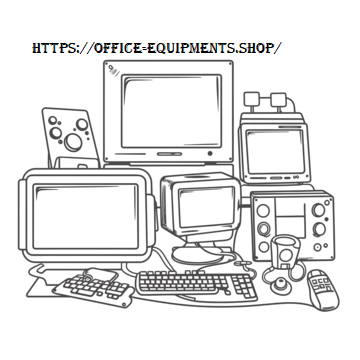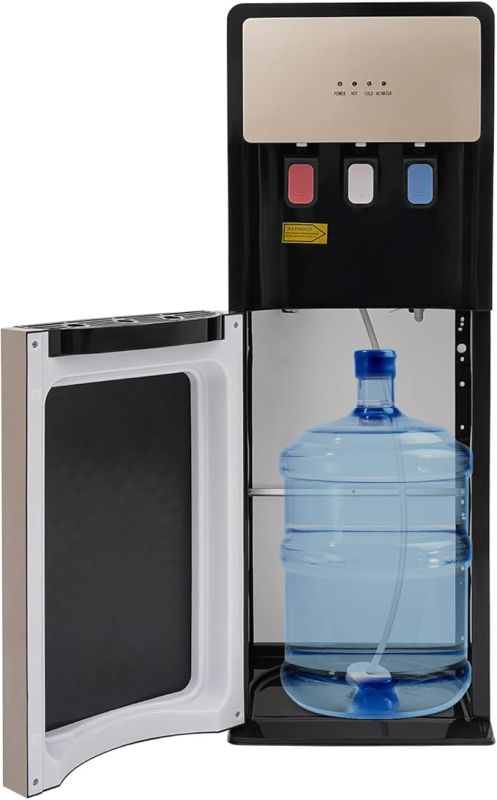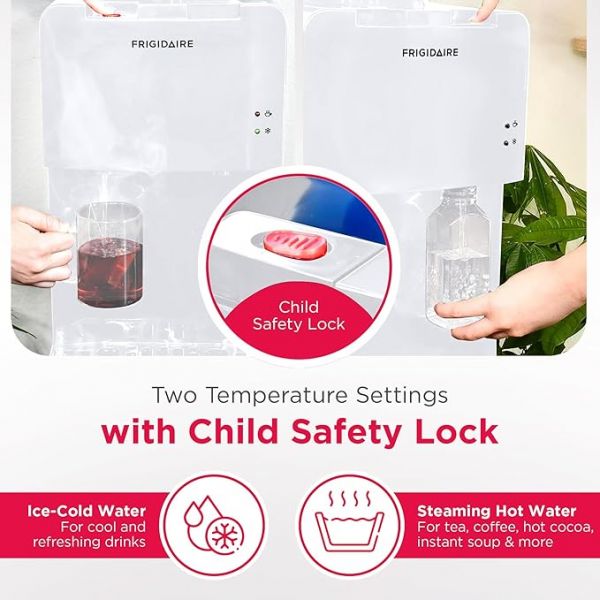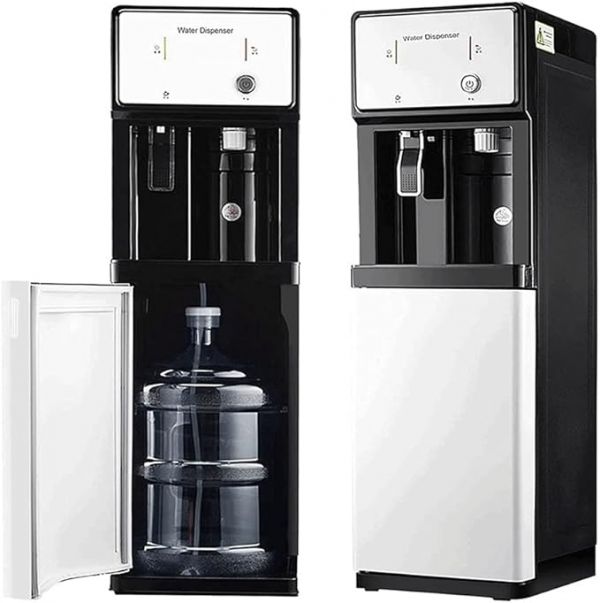Best Ergonomic Office Chairs for Back Support

- TL;DR comparison: top picks for back support
- Why back support matters
- How to choose an ergonomic chair for back pain relief
- Feature scorecard you can copy
- The best ergonomic office chairs for back support (mini-reviews)
- Herman Miller Aeron — breathable benchmark for lumbar stability
- Steelcase Leap V2 — adaptive support with granular tuning
- Haworth Fern — whole-back “wave” support that moves with you
- Herman Miller Embody — premium dynamic backfit for posture change
- Steelcase Series 2 — accessible ergonomics with optional lumbar
- Branch Ergonomic Chair — wallet-friendly and supportive
- HON Ignition 2.0 — budget hero with scalable options
- How to fit any office chair to your back (5-minute setup)
- Quick posture & setup table
- Common buying mistakes (and quick fixes)
- The bottom line
If you sit for hours every day, your chair is more than furniture—it’s health equipment. The right ergonomic office chair reduces lower-back strain, encourages neutral posture, and helps you focus longer. The wrong chair compresses your thighs, lets your pelvis roll back, and forces your spine to slump. A supportive backrest preserves a gentle inward curve at the small of your back and shares load between the seat, back, and feet; that’s why adjustability matters as much as cushioning.
TL;DR comparison: top picks for back support
| Chair | Best for | Lumbar support | Seat-depth adjust | Recline & tilt | Weight rating | Warranty |
|---|---|---|---|---|---|---|
| Herman Miller Aeron | Cooling mesh, long days | PostureFit SL (dual pads) or adjustable lumbar bar | Size-based fit helps achieve proper depth | Harmonic 2 tilt, smooth recline | Up to 350 lb | 12 years |
| Steelcase Leap V2 | Customizable all-day support | Height-adjustable lumbar + lower-back firmness dial | Yes (slider) | Synchro-tilt with tension + lock | Up to 400 lb | Limited lifetime |
| Haworth Fern | “Floating” all-back support | Integrated lumbar; optional height-adjust | Yes | Balanced recline with tension + back stop | ~325 lb | 12 years |
| Herman Miller Embody | Premium dynamic spine alignment | BackFit adjustment + pixelated support | Fixed depth with flexible front edge | Smooth, expansive recline | 300–350 lb | 12 years |
| Steelcase Series 2 | Mid-range task-chair value | Air LiveBack with optional lumbar | Yes | Synchro-tilt, multi-position lock | ~300–350 lb | Limited lifetime |
| Branch Ergonomic Chair | Budget with real lumbar | Height-adjustable lumbar | Yes | Tilt with tension + lock | ~275–300 lb | 7 years |
| HON Ignition 2.0 | Budget alternative that scales | Height-adjustable lumbar | Yes | Synchro-tilt with lock | ~300 lb (Big & Tall option) | 5 years + |
| Sihoo/Autonomous class | Low-cost mesh choices | Basic lumbar (varies) | Often | Basic tilt | ~250–300 lb | 1–5 years |
Specs vary by configuration. Confirm options (lumbar type, arms, cylinder height) before purchasing.
Why back support matters
Sitting tends to rotate the pelvis backward, reducing the natural lumbar lordosis. Without support, your lower back flattens or even rounds, increasing disc pressure and encouraging slouching and upper-back tension. Chairs that let you keep your feet flat, adjust seat height and depth, and maintain a gentle lumbar curve help you stay in a neutral posture—and changing posture periodically is just as important as the initial setup.
How to choose an ergonomic chair for back pain relief
Use this checklist to prioritize features that matter most for your spine:
-
Lumbar support that fits you. Look for height adjustment so the bulge aligns with your lumbar curve; better chairs also let you tune firmness or depth. Systems like PostureFit SL (dual pads at sacrum and lumbar) or adaptive “LiveBack” designs distribute pressure as you move.
-
Seat height and seat depth. Height should let you keep feet flat (or on a footrest) with hips level with—or slightly above—knees. A depth slider is vital: aim for a two-to-three-finger gap between the seat edge and the backs of your knees so your back can contact the backrest without calf pressure.
-
Recline and tilt quality. Synchronous recline (back moves more than seat) keeps your gaze stable while shifting load to the backrest. Tension, recline range, and multiple lock points encourage position changes—key for long-hour comfort.
-
Armrests that meet your elbows. Height, width, depth, and pivot (“4D”) armrests let you keep shoulders relaxed and forearms supported, reducing neck and upper-back strain.
-
Breathable, supportive back. Mesh disperses heat and spreads pressure; upholstered foam can feel plusher. Both can be excellent if the shape and adjustments are right.
-
Sizing and weight capacity. Some chairs come in multiple sizes rather than huge depth ranges. If you’re very petite or very tall, multi-size designs may fit better than one-size-fits-all. Verify weight rating and warranty length; long, comprehensive warranties usually accompany sturdier mechanisms.
-
Build quality and service. Chairs you adjust daily benefit from robust levers, intuitive dials, and parts availability; top brands publish detailed spec sheets and back products for many years.
Feature scorecard you can copy
| Feature | Minimum to look for | Better | Best |
|---|---|---|---|
| Lumbar | Fixed bulge | Height-adjustable | Height + depth/firmness or dual-pad sacrum + lumbar |
| Seat depth | None | Slider (≈1.5–2.5 in) | 3 in+ range or multi-size shell |
| Armrests | Height only | Height + width | 4D (height, width, depth, pivot) |
| Recline | Basic tilt | Synchro-tilt w/ tension | Smooth mechanism w/ multi-position lock |
| Warranty | 1–5 years | 7–10 years | 12-year+ or lifetime |
| Sizes | One size | Petite/Tall versions | Three sizes or clear fit guidance |
The best ergonomic office chairs for back support (mini-reviews)
Herman Miller Aeron — breathable benchmark for lumbar stability
Aeron pairs tensioned mesh with PostureFit SL, two pads that stabilize the base of the spine and reinforce lumbar lordosis. The Harmonic 2 tilt keeps your pelvis engaged with the backrest through recline, and three shell sizes (A/B/C) improve depth fit for petite and tall users. If you run warm or sit long hours, Aeron’s airflow and smooth recline make it an easy recommendation. Sizes B and C are rated to 350 lb, and the 12-year warranty is among the longest.
Best for: long sessions, warm offices, and users who want precise sacral/lumbar control.
Back-support highlights: PostureFit SL or adjustable lumbar bar; size-based fit.
Steelcase Leap V2 — adaptive support with granular tuning
Leap’s design flexes to your spine across postures. The height-adjustable lumbar plus a separate lower-back firmness dial let you place and fine-tune pressure exactly where you need it. A generous seat-depth slider, waterfall front edge, and four-way arms help keep shoulders and hips neutral. Many people find Leap comfortable whether upright, in slight recline, or forward-leaning for task focus. It’s rated to 400 lb and carries a long warranty.
Best for: people who want lots of adjustability with a cushioned feel.
Back-support highlights: height + firmness lumbar, strong seat-depth range, smooth synchro-tilt.
Haworth Fern — whole-back “wave” support that moves with you
Fern spreads load across your entire back via a flexible Wave Suspension; many users say it “disappears” under you because there’s no hard perimeter frame. If you want extra lower-back emphasis, add the height-adjustable lumbar option. Recline feels balanced and controlled, with a simple back stop to cap the range. It’s warrantied for users up to ~325 lb.
Best for: posture shifters who want continuous, whole-back contact.
Back-support highlights: integrated support, optional height-adjust lumbar, generous seat-depth range.
Herman Miller Embody — premium dynamic backfit for posture change
Embody’s calling cards are its pixelated support matrix, which spreads pressure evenly, and BackFit adjustment that shapes the back to your spine’s natural curve. Many people with mid- and upper-back tension prefer Embody because it encourages micro-movements and maintains contact through recline. If you like cushion over mesh but still want airflow, Embody is one of the best-balanced designs for spinal support.
Best for: knowledge workers who want dynamic spinal support all day.
Back-support highlights: BackFit adjustment, even pressure distribution, smooth recline.
Steelcase Series 2 — accessible ergonomics with optional lumbar
Series 2 distills Steelcase ergonomics into a simpler, more affordable package. The adaptive backrest provides supportive flexibility, and the optional lumbar gives targeted lower-back reinforcement. A proper seat-depth slider and quality 4D arms help you dial in neutral posture without fuss. If you’re moving up from a generic task chair, Series 2 is a meaningful upgrade for back health without flagship cost.
Best for: mid-range budgets that still demand adjustability.
Back-support highlights: adaptive back with optional lumbar, depth slider, solid arm adjustability.
Branch Ergonomic Chair — wallet-friendly and supportive
Branch keeps the essentials: a height-adjustable lumbar pad, a seat-depth slider, and multi-way arms. The backrest contour cues upright posture yet reclines comfortably, and the mechanism offers tilt tension + lock for typing. While build quality trails premium brands, Branch punches above its price for back support if you dial in the fit. Many mainstream guides rate it highly for long hours, which tracks with its adjustability.
Best for: budget buyers who still want real lumbar and depth adjustment.
Back-support highlights: adjustable lumbar, depth slider, simple tilt.
HON Ignition 2.0 — budget hero with scalable options
Ignition 2.0 shows up on “best budget” lists because it offers seat depth, 4-way arms, and an adjustable lumbar at an approachable price. It comes in standard and Big & Tall variants, so heavier users can still get proper back support without premium prices.
Best for: tight budgets and heavier users who still need a dialed-in fit.
Back-support highlights: real lumbar adjustment, synchro-tilt, multiple size options.
How to fit any office chair to your back (5-minute setup)
-
Set height so feet are flat and knees are roughly level with hips. If your desk is high and you raise the chair to keep elbows near 90°, add a footrest or sturdy box for your feet.
-
Slide the seat depth until you can sit back and feel the backrest while leaving a two-to-three-finger gap between the seat edge and the backs of your knees.
-
Place the lumbar at the small of your back (above the pelvis). Start with moderate firmness; you should feel gentle support, not a hard push.
-
Dial in recline with light-to-moderate tension so you can lean back while the chair supports you. Add a touch more recline for reading; stay more upright for focused typing.
-
Adjust the arms so your shoulders are relaxed and your elbows sit near 90°. Bring arm pads forward for typing and pivot them slightly inward to meet your forearms.
-
Recheck monitor and keyboard after every chair change. The top of your screen should be near eye level and about arm’s length away; keep the mouse and keyboard close so you’re not reaching.
-
Build movement into your day. No chair can fix hours of stillness. Stand, walk, or stretch for a minute every 30–45 minutes, and vary your recline angle regularly.
Quick posture & setup table
| Step | Target cue | Why it helps your back |
|---|---|---|
| Seat height | Feet flat; hips ~level with or slightly above knees | Keeps pelvis from tucking; preserves lumbar curve |
| Seat depth | 2–3-finger gap at knees | Lets you use the backrest without calf compression |
| Lumbar height | Bulge sits at small of back | Supports lordosis; reduces disc pressure |
| Recline | Easy small-to-moderate range | Shifts load between seat and back; prevents static strain |
| Armrests | Elbows ~90°, shoulders relaxed | Offloads neck/upper-back muscles during typing |
| Breaks | Micro-breaks every 30–45 minutes | Restores circulation; reduces stiffness |
Common buying mistakes (and quick fixes)
-
Chasing plush cushioning. More foam ≠ better support. Prioritize back shape, lumbar adjustability, and seat-depth control over initial plushness.
-
Ignoring size guidance. If a chair comes in multiple sizes, use the brand’s fit chart; it often provides a better match than a shallow depth slider.
-
Forgetting arm adjustability. Fixed arms can force shoulder shrugging and neck pain; aim for at least height and depth adjustment.
-
Skipping movement. Even the best chair can’t counter eight still hours. Plan brief movement breaks.
The bottom line
Back support is about fit, not hype. Prioritize an adjustable lumbar that meets your lower spine, a seat-depth setting that lets you use the backrest, and a recline you’ll actually use. If budget allows, proven designs like Aeron, Leap, Fern, and Embody pair excellent lumbar mechanics with durable parts and long warranties. On tighter budgets, Series 2, Ignition 2.0, and Branch deliver the core adjustments your back needs—then spend a few minutes fitting the chair to your body and build gentle movement into your day.








